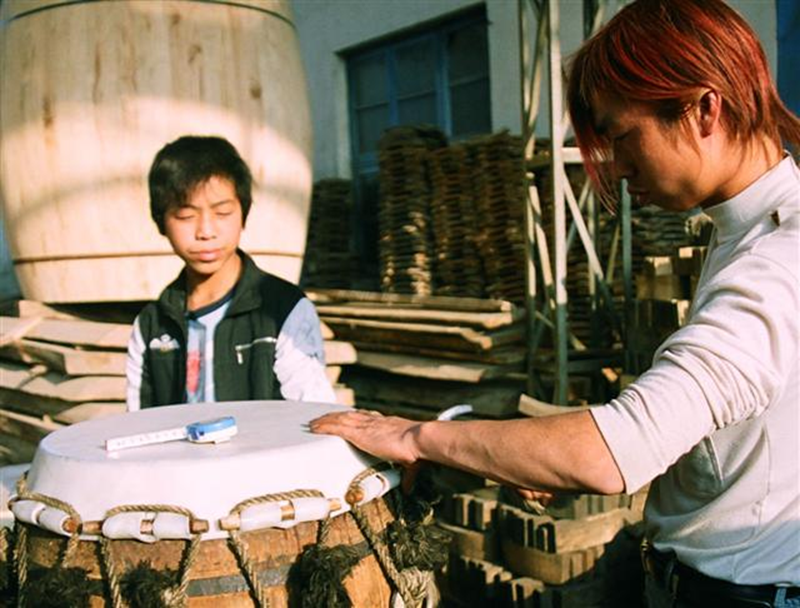
The inheritors craft the Cai Fumei drum. [Photo/fujian-szwhg.chaoxing.com]
The traditional ethnic musical instrument making craft known as Cai Fumei traditional drum-making technique practiced in Zhangzhou city, Fujian province, has been recognized as part of China's rich cultural heritage. It was included in the second batch of China's National Intangible Cultural Heritage Representative List under the category of traditional craftsmanship.
The "Cai Fumei" brand was established during the reign of Emperor Qianlong of the Qing Dynasty (1644-1911). The workshop originally based in Longxi county (now in the vicinity of Magong Temple, Xiangcheng district, Zhangzhou), gained fame for producing dou (a traditional 15-catty round measuring vessel). With a history spanning over 200 years, the craft has been passed down through 13 generations.
The Cai Fumei drums are categorized into 13 types and over 20 specifications, including temple drums, lion dance drums, and theatrical drums. The Cai Fumei drum-making technique is highly distinctive, with dozens of intricate techniques passed down through generations.
The drum body is custom-built from century-old pine or fir wood, carefully selected based on the required drumhead diameter. For the drum membrane, Cai Fumei exclusively uses water buffalo hide from southern China, a choice that sets it apart from other drum makers.
Since the mid-Qing Dynasty, Cai Fumei drums have been highly sought after in Fujian, Guangdong, and Taiwan. For over 200 years, it has earned an unparalleled reputation in Zhangzhou and across Fujian for its superior craftsmanship, pure resonant sound, and exceptional durability. Today, Cai Fumei remains a distinguished and enduring name in traditional drum making.

Copyright © General Office of Fujian Provincial People's Government
Website Identification Code 3500000049Registration Number: 15003084
All rights reserved. The content (including but not limited to text, photo, multimedia information, etc) published in this site belongs to fujian.gov.cn.
Without written authorization from fujian.gov.cn, such content shall not be republished or used in any form.